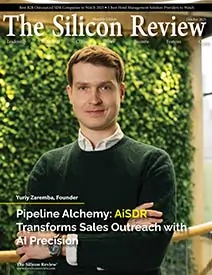>>
Industry>>
Food and beverages>>
FDA goes ahead with Natural Fo...FDA goes ahead with Natural Food Dyes approval, Accelerating Industry’s Clean-Label Transition
The Silicon Review
13 May, 2025
With mounting pressure to eliminate synthetic additives, the FDA’s green light on three new natural dyes marks a pivotal moment for the food industry’s clean-label overhaul.
The U.S. Food and Drug Administration (FDA) has greenlit three plant-based food dyes—sourced from purple sweet potatoes, spirulina algae, and safflower petals—as synthetic color replacements, intensifying pressure on manufacturers to overhaul recipes ahead of California’s 2026 ban on additives like Red Dye No. 3. The ruling arrives as consumer distrust of artificial ingredients hits record highs, with 69% of U.S. buyers actively rejecting products containing lab-made colors, per a 2024 Hartman Group analysis. California’s stringent legislation has become a de facto national standard, compelling brands to adopt alternatives that balance vibrancy with functionality. The approved options tackle historical pain points: purple sweet potato maintains its bold indigo hue in acidic drinks, spirulina retains green tones under UV exposure, and saffflower-derived reds withstand high-temperature baking—a breakthrough for snacks and cereals.
For manufacturers, the pivot is a high-cost, high-reward gamble. Though synthetic dyes remain 25–35% cheaper, brands leveraging natural substitutes can command price hikes of up to 20% in the booming $210 billion clean-label sector. But reformulation isn’t simple. Firms like Ingredion and DSM disclose a 50% spike in requests for simulation software that predicts how plant-based pigments interact with ingredients like vitamin C (which can dull colors) or emulsifiers. Emerging players, such as Denmark’s ChromaFoods, are disrupting the space with algae-engineered dyes that mimic synthetic brightness at lower costs. Technology now underpins compliance. Systems like SAI360’s regulatory dashboards alert companies to shifting policies across jurisdictions, while startups like ripe.io use blockchain to authenticate dye origins—critical for retailers like Costco, which mandates farm-to-factory traceability. Meanwhile, EU bans on seven artificial colors have pushed multinationals like Unilever to preemptively reformulate U.S. exports, creating a two-speed market where lagging brands face exclusion.
In categories like children’s snacks—where 83% of parents demand artificial-free options—delay risks irrelevance. The FDA’s move signals a watershed: clinging to synthetic additives no longer aligns with regulatory or consumer realities. As taste and safety merge with transparency, the food industry’s future is colored by nature—or not at all.
_2025-12-15_12-44-58.webp)


_2025-11-17_06-38-14.webp)

 (1)_2025-10-21_13-35-14.webp)
